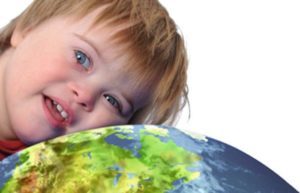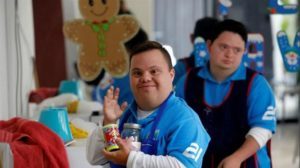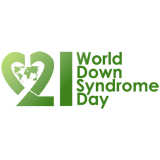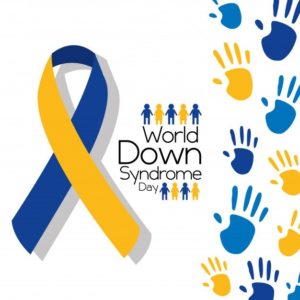
On March 21, the world celebrates a very special day. One that emphasizes human diversity, acceptance, and understanding. First observed in 2006, the date was recognized by the United Nations in 2012. Now it includes many countries. On this day you may see many people wearing brightly colored, mismatched, long, printed socks. They are supporting World Down Syndrome Day (WDSD).
The Biology
The human body is a complex, delicate piece of machinery. So much so that even the tiniest variation or error in its genetic makeup may have dire consequences. This is the case with Down syndrome. It is caused by an error in cell division, which occurs during the formation of the mother’s egg or the father’ sperm. When the two cells get together at conception they pass on to the embryo a full or partial extra copy of chromosome 21. Most people have 23 pairs of chromosomes, for a total of 46. People with Down syndrome have 47.
What are chromosomes? They are structures inside each of the cells of our bodies and are composed of genes. Genes provide information that determines all the characteristics of people, from their hair color to their gender (female or male).
Some Facts

* The syndrome is not an illness nor a disease but a genetic condition.
* There are three types of Down syndrome: trisomy 21, translocation and mosaicism.
* The medical name for this condition is trisomy 21 [21, 3]. Hence the date choice for WDSD.
* The syndrome was first identified and described in 1866 by Dr. John Langdon Down and it is named after him.
* Even though Down syndrome happens everywhere in the world and affects parents of all races, ages, and levels, women over 35 are more likely to give birth to children with this genetic anomaly.
* One of the oldest recorded cases of Down Syndrome was discovered in France in the skeleton of a child from 1500 years ago.
* Although not everybody affected with Down syndrome faces the same problems, they all share several characteristic physical features as well as important health and development challenges. They also have different levels of intellectual disability.
* There are tests for Down syndrome. They are carried out either before a baby is born or immediately after.
* There are also ways to help diminish the probability of having a child with it, but currently there is no cure for the syndrome.
Local Initiatives
The three Latin American countries with the lowest number of cases of Down syndrome are (over a total of 10,000 births) Venezuela, with 14.9, Ecuador, with 14.8, and Uruguay, with 13.8. In Costa Rica, there are about 4000 people with Down Syndrome.

Several organizations like Asociación Síndrome de Down de Costa Rica (Asidown) [Costa Rica’s Down Syndrome Association] strive to accomplish the goals proposed by the United Nations’ General Assembly, that “invites all Member States, relevant organizations of the United Nations system and other international organizations, as well as civil society, including non-governmental organizations and the private sector, to observe World Down Syndrome Day in an appropriate manner, in order to raise public awareness of Down syndrome;”
“ASIDOWN is made up of people with Down syndrome and their families, who have come together in an effort for the well-being of this sector of the population.”
* It has been determined that that 50 years in the life of a person with Down syndrome is approximately equivalent to 70 in a person without this condition. So in a pioneering move, from November 10 on, 2017 Costa Ricans with Down Syndrome will be able to retire at 40 years, 25 years before the rest of the population.
* In 1997, Costa Rica’s government passed the Law 7600, that pursues “the integral development of the population with disabilities in equal conditions of quality, opportunity, rights, and duties, like the rest of the [country’s] inhabitants.”
Life Goals

In spite of their special needs, people with Down Syndrome have basically the same goals and rights other human beings have, such as:
* Peer group acceptance
* Respect, love, and understanding
* Self-expression
* Inclusion in the community
* A chance to develop to their full potential
* The right to lead a meaningful and productive life.
What We Can Do
We should bear in mind that even though people with Down syndrome have been with us since the beginnings of the human race, they are still misunderstood and victims of discrimination. One of the most important hurdles they face is the negative attitudes some people show towards them. They do not see the human being beyond the genetic condition.
Why Odd Socks for Down Syndrome?
The answer is simple: Chromosomes look like socks and people with the syndrome have an extra (or odd) chromosome.
So, on [21-3] help raise awareness on trisomy 21.
* Talk about the issue.
* Use the socks to start a conversation.
* Wear your funkiest or even mismatching socks proudly and show your support for people with Down syndrome.
We need to learn to accept everyone as they are. Individual awareness and attitudinal changes can go a long way to make the world a better place for everybody.

